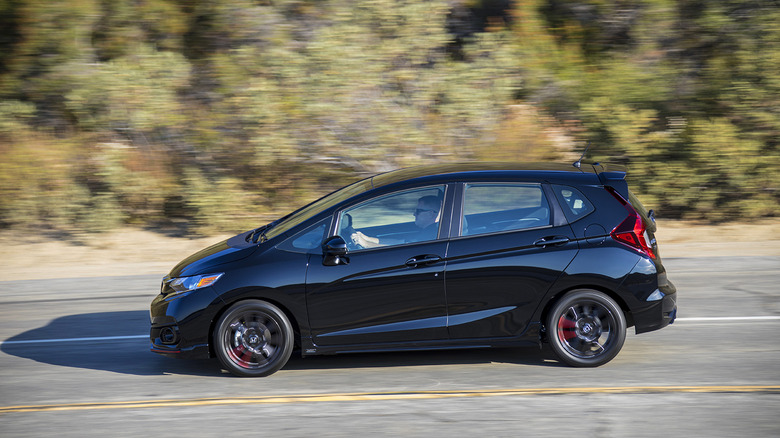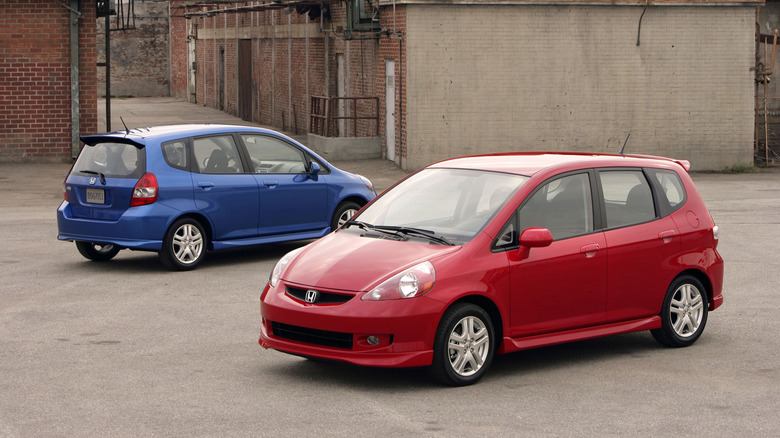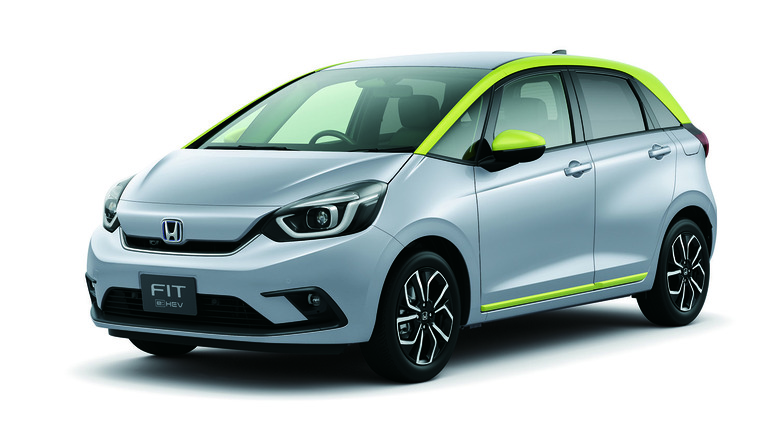Why Did Honda Discontinue The Fit, And What Replaced It?
It was nearly 20 years ago when Honda announced that it was bringing the Fit subcompact to the North American market for the 2007 model year. At that point, the Fit (also called the Honda Jazz in other markets) had already been on sale for several years internationally, with a lot of acclaim. In Honda's home market of Japan, the Fit was a smashing success, regularly sitting near the top of Japanese sales charts.
Though Honda didn't expect that same level of success in America, where larger cars were the norm, it hoped the Fit would serve as an entry-level car for the brand, and appeal to buyers who wanted a Honda that was smaller and less expensive than the Civic. At the time, a new class of subcompact cars was attempting to find footing in the American market. The group included not just the Fit, but also cars like the Toyota Yaris and Nissan Versa, hoping to reignite the spark for small, fuel-efficient hatchbacks.
Ultimately, the subcompact boom that started in the late 2000s would be relatively short-lived. Though the Honda Fit was well-received and known for its reliability, it would eventually become a victim of a changing car market and a general industry pivot away from small cars and sedans and toward crossover SUVs. By 2020, the Fit, along with many other small cars, would be discontinued in America, with the Civic once again taking over as the least expensive car in Honda's lineup.
Rise and fall of the Fit
When the Fit first arrived in America for the 2007 model year, both automotive media and buyers alike soon discovered what made the little Honda so appealing overseas. True to its name, the Fit packed a massive amount of passenger and cargo space into its small footprint, and was surprisingly fun to drive. For longtime Honda fans, it was a throwback to the cars of the '80s and '90s that always punched above their weight.
By the time Honda started importing the Fit to America, the first-generation car was already nearing the end of its production run, and the second-generation Fit would make its debut for the 2009 model year. In many ways, the Fit ended up being the perfect car for the late 2000s. In the face of rising gas prices and a turbulent economy, a cheap Honda with great gas mileage had lots of appeal. 2008 and 2009 would be the Fit's two best sales years in America.
The third-generation Fit debuted in America for the 2015 model year, and it carried on the same great Honda Fit formula with some added refinements. But by the late 2010s, with the unstoppable rise of the crossover SUV, the appetite for small cars in America decreased. By 2018, Honda Fit sales were less than half of what they were at their 2008 peak.
Fit for replacement
The Fit's declining sales figures, combined with its low profit margins, would soon spell the end of the line for the car in the American market. 2020 would be the Fit's final year in North America, though it did not discontinue the Fit altogether. A new fourth-generation Honda Fit/Honda Jazz debuted in 2019 and has continued to be sold in markets outside of the U.S.
While there was no direct replacement for the Fit in the American market, after the car's demise, Honda ramped up production of its increasingly popular HR-V subcompact crossover SUV, which now shares the entry-level part of Honda's lineup with the Civic. Today, we list both the Civic and the HR-V among other small cars that could be considered alternatives to the Honda Fit.
While it's unlikely to see the Fit in its current form making a comeback to the American market, the name is still well-regarded among Honda fans. We'd say it's not out of the realm of possibility that the Fit name could come back on some sort of small future EV or hybrid vehicle from Honda.


